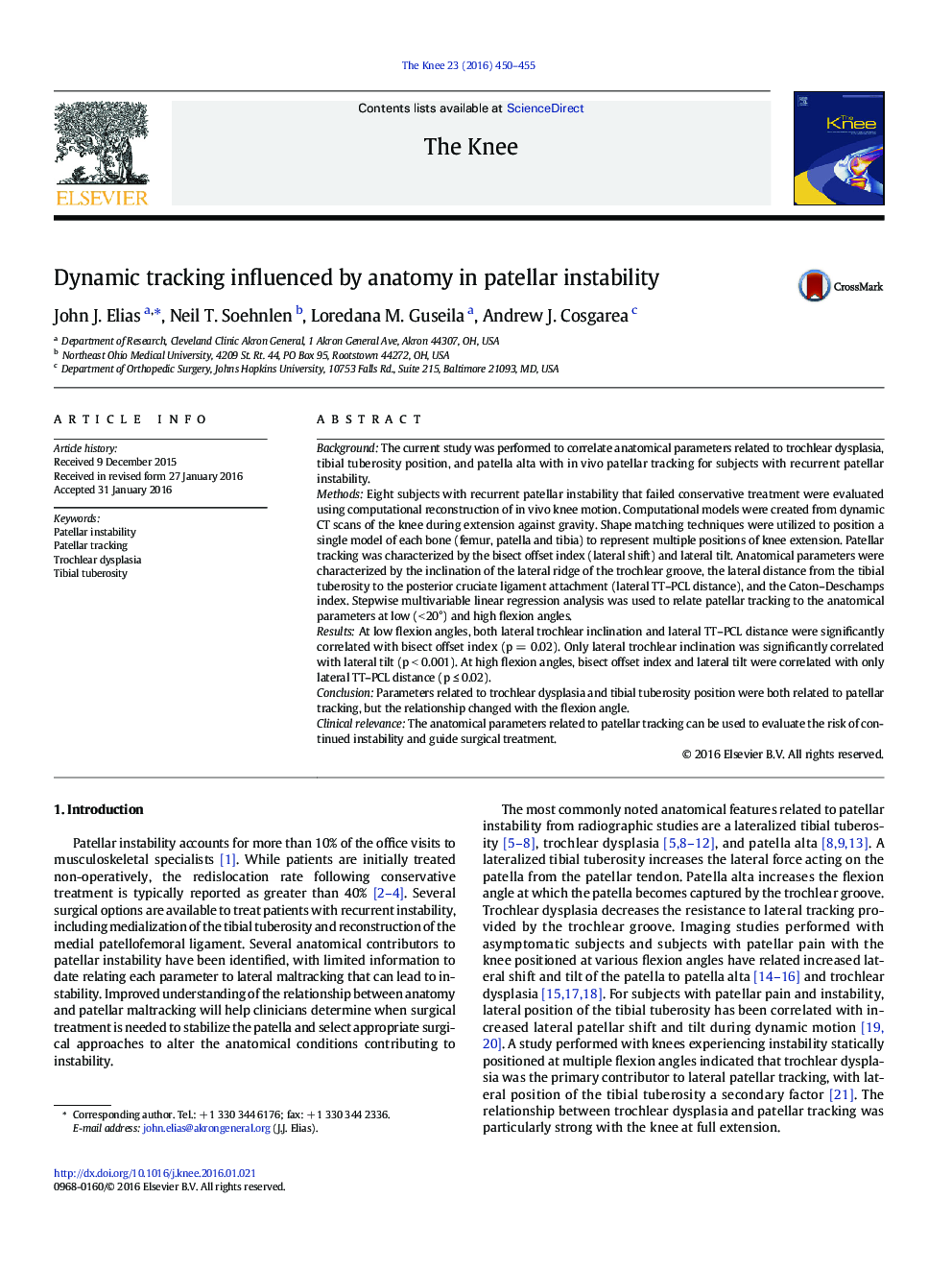| کد مقاله | کد نشریه | سال انتشار | مقاله انگلیسی | نسخه تمام متن |
|---|---|---|---|---|
| 6211132 | 1267205 | 2016 | 6 صفحه PDF | دانلود رایگان |
- Multiple anatomical factors influence patellar tracking related to instability.
- Trochlear dysplasia and tibial tuberosity position influence patellar tracking.
- The relationship between anatomy and tracking varies with the flexion angle.
BackgroundThe current study was performed to correlate anatomical parameters related to trochlear dysplasia, tibial tuberosity position, and patella alta with in vivo patellar tracking for subjects with recurrent patellar instability.MethodsEight subjects with recurrent patellar instability that failed conservative treatment were evaluated using computational reconstruction of in vivo knee motion. Computational models were created from dynamic CT scans of the knee during extension against gravity. Shape matching techniques were utilized to position a single model of each bone (femur, patella and tibia) to represent multiple positions of knee extension. Patellar tracking was characterized by the bisect offset index (lateral shift) and lateral tilt. Anatomical parameters were characterized by the inclination of the lateral ridge of the trochlear groove, the lateral distance from the tibial tuberosity to the posterior cruciate ligament attachment (lateral TT-PCL distance), and the Caton-Deschamps index. Stepwise multivariable linear regression analysis was used to relate patellar tracking to the anatomical parameters at low (< 20°) and high flexion angles.ResultsAt low flexion angles, both lateral trochlear inclination and lateral TT-PCL distance were significantly correlated with bisect offset index (p = 0.02). Only lateral trochlear inclination was significantly correlated with lateral tilt (p < 0.001). At high flexion angles, bisect offset index and lateral tilt were correlated with only lateral TT-PCL distance (p â¤Â 0.02).ConclusionParameters related to trochlear dysplasia and tibial tuberosity position were both related to patellar tracking, but the relationship changed with the flexion angle.Clinical relevanceThe anatomical parameters related to patellar tracking can be used to evaluate the risk of continued instability and guide surgical treatment.
Journal: The Knee - Volume 23, Issue 3, June 2016, Pages 450-455
